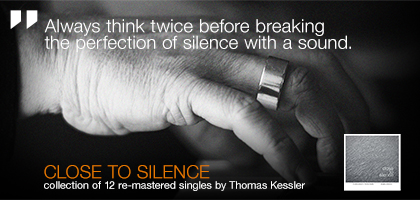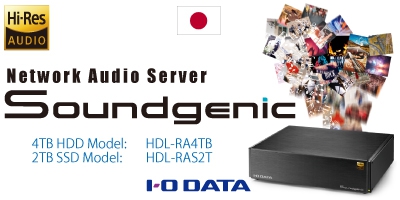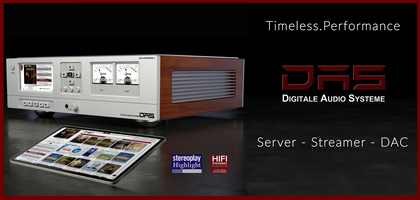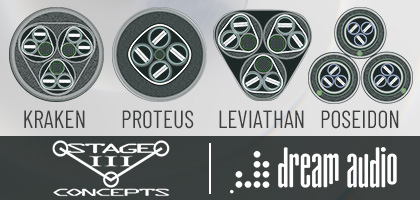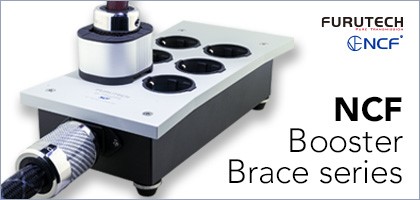 Contents
Contents
No. 248 January 2025
- COVER REVIEW: Gigawatt POWERMASTER 25 ANNIVERSARY EDITION ⸜ AC power conditioner » POLAND
- KRAKOW SONIC SOCIETY № 149: High Fidelity Presents: ART FARMER: Art Farmer in Wrocław » POLAND/Krakow
- REVIEW: Audio Phonique DESIRE SP ⸜ speaker cables » POLAND
- REVIEW: Avatar Audio DREAMLINK № 1 ⸜ analog interconnect • RCA » POLAND
- REVIEW: DS Audio MASTER 3 ⸜ optical cartridge + phono stage » JAPAN
- REVIEW: Laiv HP2A ⸜ preamplifier/headphone amplifier » SINGAPORE
- REVIEW: TiGLON TPL-2000L Professional ⸜ LAN cable » JAPAN
- AWARDS: BEST of… 2024 according to HIGH FIDELITY

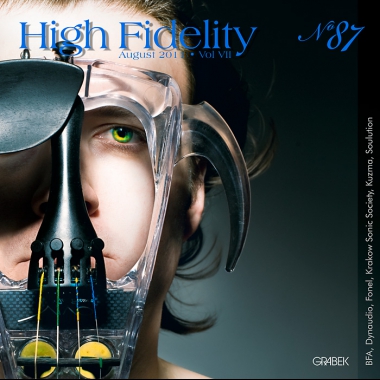
|
FIDELIO MUSIC AND HIGH RESOLUTION FILES

As we can learn from the Fidelio web page, the Profile tab, this is a “relatively young” label, specialized in high quality classical music and jazz. It was founded to “promote local and international talents”. Fidelio Musique Inc., this is the full name, is located in Québec, Montreal (Canada). We know this business model already, just to name ECM or ACT one. Both “giants” in jazz, ethno and classical music started wi 
The companies I mentioned have, besides the slightly different business model, than the big names have, another thing in common: the outstanding quality of recorded sound. And here we have another trap, which – as it seems to me – Fidelio passed: we have many audiophile companies, which offer an incredibly good recording quality, with a weak, often even terrible or grotesque, repertoire.
We do not have to worry about the “audiophile” part of the Canadian label. The company offers recording services, so the studio equipment is well known. This consists of a variety of good microphones, including self made ones, Analog to Digital converter A/D 905 by dCS (DSD) 32 bits/384kHz, microphone preamplifiers Millennia M2B, Pendulum Tube Pre, Sonosax. Among the recorders we will find the Nagra VI & LB-PCM (24 bits/96kHz/6 channels) or Genex 8500, DSD (SACD, 8 tracks) and Sonosax minir 82 (8 tracks, 24 bits/192kHz). Besides modern recorders we will fins also some vintage stuff: a tube, reel-to-reel Ampex recorder (1964) and Nagra IV-S (analog). And cables from Siltech and Shunyata.
Although the recording gear can often be from the same high quality and audiophile origin, the most unique thing is the listening system, prepared to monitor the recorded material. The company has a digital and analog devices, and among the reference system we’ll find:
- dCS Elgar DAC
- Manley and Audio Research Phonostages
- Power amplifiers from Nagra and VPA
- Loudspeakers from Verity Audio and Sonus Faber

On the pictures we can also see a multiformat player from Arcam, a power filter from Shunyata, a Simaudio Moon power amplifier, line preamplifier Nagra PL-L and a Sony SACD player. Pretty impressive, isn’t it? I knew this company from a few recordings, but it only happened lately, that it caught my attention. What happened? Well, recently the company started to offer, next to the CDs, high resolution files – 24/96 and 24/176.4. 
The case is not new, it is for example known from Linn Records, which was the pioneer in sales of hi-res files, which you could download directly from their web page. Lately you can do the same from the Chesky brothers’ page, HDTracks. Having such renowned predecessors, Fidelio decided to go its own way. They sell their files on a physical carrier, a pendrive. Those look like a metal credit card, with a small element that opens forming a USB plug, that you can plug directly into a computer or a file player. On the top side there is the company logo and the name “High Definition Studio Master”, while on the back the title of the album and the signature of the person transferring the files to the dongle, serial number and the sample frequency of the recording (all are 24 bits). We can clearly see, that this is mostly hand work, and this is in no way a mass scale. 
I will talk about the sound in a moment, but I would like to talk for a while about the phenomenon of the physical distribution of hi-res music. I do not have to say, that download of music is much easier and quicker. The mentioned Linn, but also Naim, Deutsche Grammophon, Naxos, and many other companies convinced themselves, and us, that it is worth doing. Yes, I promised to tell you something about the sound. Listening to the CDs recorded by Fidelio, because I started with them, I was absolutely surprised with what I heard – both from the musical as well as the mastering side. The sound was incredibly spacious. At first it seems little “fleshy”. But after some time it turns out, that the material was very little compressed, so you need to turn up the volume. I remember well that those were the same complaints as for the ECM recordings: that they are bright, little palpable. This is clear rubbish, but the information went to the world. 
This is the reason, that it is worth to put the sound of Fidelio in the right perspective from the very beginning. Those are almost flawless realizations, with beautiful timbre and incredibly high dynamics. Those elements are nicely shown by going over from the CDs to the Master Flash – the timbre is similar, but the dynamics increases and we get much more information. After listening to the MF the CD sounds in a rather raw and “compressed” way. This is true, but only looking at them from the perspective of the high resolution files. Looking from the perspective of other CDs it is different. For me the CD, as well as Master Flash, are reference, each in its own category. |
Contact:  As you can see not everything we planned we could deliver. The amplifier ModWright KWA150 Signature Edition, fell from the schedule, because it did not arrive in time. But we were able to test something else – the SACD player Soulution 540. Early enough we got also another novelty from Denmark, the loudspeakers Dynaudio Focus 260. Costing 12900zl a pair they are a turning point for the company – I encourage you to read the test. Why did we need to wait so long for such jumps in products from companies like Bowers&Wilkins or KEF? I do not know. But because Dynaudio did also let us wait for a long time and lately only improved one and other thing in their products, I assume, that the audio giants will surprise us with something shortly.  I did not write about the plans for August before. Because I was not sure, if everything will be done as planned – but we did it! August edition will be solely devoted to one brand – the Austrian Ayon Audio. Until recently we done it only once – in August 2009 we had an issue (No 64) devoted to McIntosh. I have now confirmed the following tests:  Maybe you do remember the interview with Mr. Rafał Lachmirowicz and Damian Lipiński (HERE)? We talked about the re-editions of the Savage recordings (and not only that). I devoted a large part of this interview to the hi-res files. I wanted to know, how those files are treated by people who create them, by professionals. It turned out, that this seems simple only to us (me), the consumers. However Damian Lipiński saw something in my questions, because he prepared something especially for “High Fidelity” a DVD with files from his last re-mixes (generally Italo Disco) in three different resolutions: 16, 24 and 32 bits (the last one floating point). This last value comes from the fact, that Damian works with 32 bit material. All files have 44.1kHz sampling frequency. This is not much, but I will work on Damian… On the disc we can read: „Special high resolution audio data disc, made exclusively for „High Fidelity”. The disc contains 12 recordings, which were digitized from 12” vinyl maxi singles, and then were digitally restored and re-mastered using 32 bits floating point arithmetic. […] Lower bit versions were made each time from the initial version.” KingRex UC192 – USB 32bits/192kHz converter
If it weren’t for the evolution of the systems playing audio files, the reproduction of such music would not be possible. Now having a laptop, a good virtual player and an appropriate DAC we can play almost everything. And the basis is the USB connection. Until recently regarded by the engineers as ideal, and by the users, including audiophiles, as the necessary evil, it got finally the required attention and money. As it seems, it will be one of the most important connections in the world of high resolution audio.  And finally, to get a little away from the digit, a few words about the newest cartridge, that became part of my reference system. Until recently the most expensive cartridge was the model Shilabe (review HERE). This is an incredible product, bringing so much life into the sound as no other. Recently, Mr. Noriyuki Miyajima wrote me, that he has something new, potentially even better than the Shilabe, the cartridge Kansui. He wrote then, that it is the better cartridge, but that the Shilabe has something, that allows it to be placed next to any other cartridge regardless its price without shame, so he suggest not to sell that one, and keep both – destined to different goals. And he was nice enough to prepare a version especially for us, for “High Fidelity”, what he certified with a special writing on the box. The cartridge has the serial number K00053. We will make a regular test of it for sure./p> And finally I wish you, the readers of “High Fidelity”, a very nice vacation!!! Wojciech Pacuła |
About Us |
We cooperate |
Patrons |
|
Our reviewers regularly contribute to “Enjoy the Music.com”, “Positive-Feedback.com”, “HiFiStatement.net” and “Hi-Fi Choice & Home Cinema. Edycja Polska” . "High Fidelity" is a monthly magazine dedicated to high quality sound. It has been published since May 1st, 2004. Up until October 2008, the magazine was called "High Fidelity OnLine", but since November 2008 it has been registered under the new title. "High Fidelity" is an online magazine, i.e. it is only published on the web. For the last few years it has been published both in Polish and in English. Thanks to our English section, the magazine has now a worldwide reach - statistics show that we have readers from almost every country in the world. Once a year, we prepare a printed edition of one of reviews published online. This unique, limited collector's edition is given to the visitors of the Audio Show in Warsaw, Poland, held in November of each year. For years, "High Fidelity" has been cooperating with other audio magazines, including “Enjoy the Music.com” and “Positive-Feedback.com” in the U.S. and “HiFiStatement.net” in Germany. Our reviews have also been published by “6moons.com”. You can contact any of our contributors by clicking his email address on our CONTACT page. |
 



|
   |
main page | archive | contact | kts
© 2009 HighFidelity, design by PikselStudio,
projektowanie stron www: Indecity



